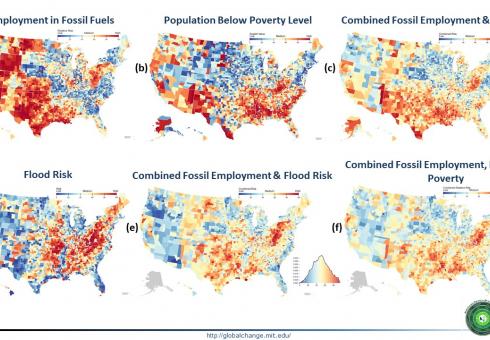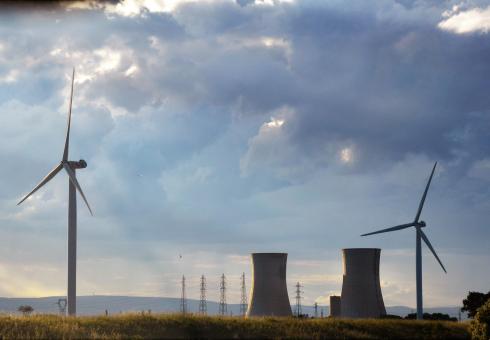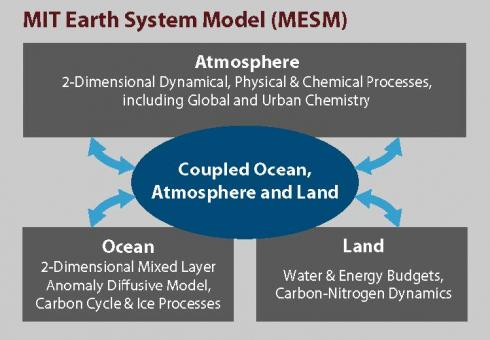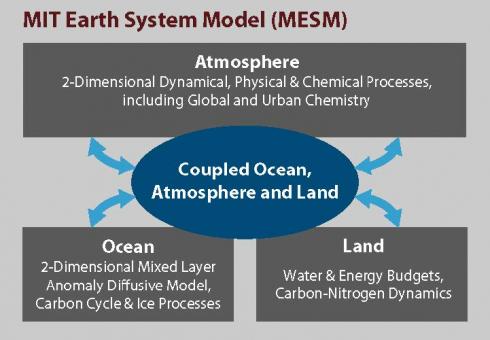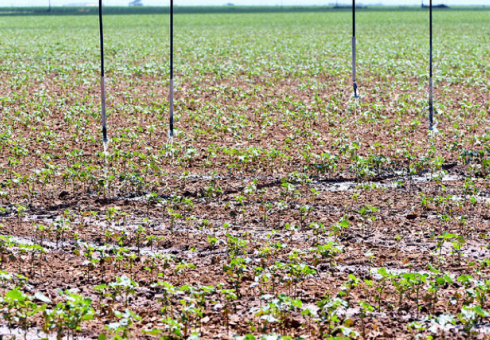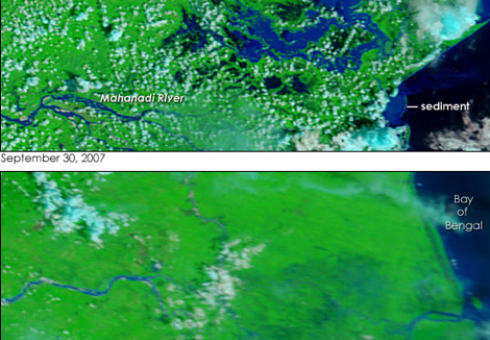Focus Areas:
- Earth Systems
- Managed Resources
- Infrastructure & Investment
- Energy Transition
- Multi-Sector Dynamics
Modeling Framework
For more than 25 years, the MIT Joint Program on the Science and Policy of Global Change has focused on a balanced approach for continual development and numerical experimentation within a multi-system, multi-sectoral modeling framework and analysis system. This balanced approach places equal emphasis on modeling and linking the various co-evolving components of: (a) physical systems (including the physical dynamics and chemical processes of the atmosphere and ocean, the biochemistry and ecosystem dynamics of land and ocean, hydrology and land surface processes, and physical resources); and (b) human systems (including economic markets, energy, agriculture, land-use change, population dynamics, and infrastructure). Another signature focus of the program has been to use a risk-based approach to quantify uncertain effects of future environmental and socioeconomic change.
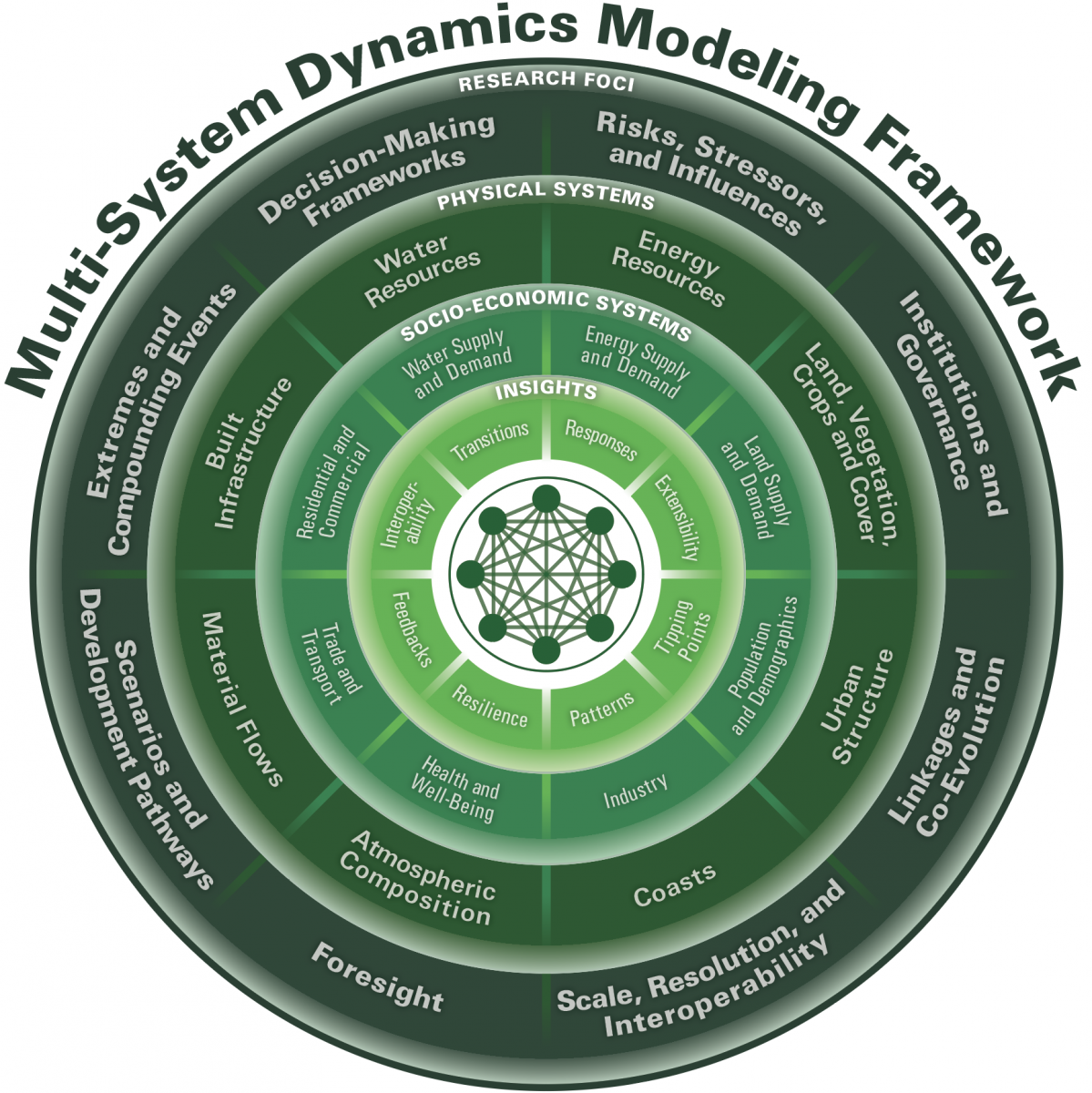
As our research has progressed, it has become clear that the interaction among various human activities and natural resources involves interaction among systems at multiple time and geographic scales. Figure 1 illustrates the broad elements of this complex “systems of systems” that comprises the MIT Joint Program’s research vision for future modeling studies. Informed by that vision and supported by the U.S. Department of Energy Office of Science, this project aims to:
- Understand (1) the forces and patterns (Fig. 1: research foci, outer ring) that are driving the evolution of water, energy and land resources; (2) coasts, the built environment, urban structure, and material flows (physical systems, second ring); and (3) atmospheric composition and links to economic sectors (socio-economic systems, third ring);
- Examine stabilities and instabilities in these systems, and their interactions, to find potential tipping points at multiple scales (inner ring); and
- Explore how different approaches to representing foresight affects the co-evolution of these systems and their resilience and vulnerabilities.
To get to the necessary level of detail in these interactions, we will focus on specific regional case studies with a goal of developing generalizable insights that can be applied beyond these regions.
Project Scope and Vision
The scope of our Cooperative Agreement has had an emphasis on: 1) continuing development of our integrated global modeling system (IGSM), with a focus on energy-water-land-atmosphere interactions; 2) better characterization of uncertain responses of the Earth system at scales relevant to decision-making under uncertainty; and 3) focused efforts on the interactions within the U.S. to develop understanding of vulnerability to global environmental change and tools that can assist in adaptation to these changes.
Within and consistent with the scope of our Cooperative Agreement, we will continue to strengthen our understanding of how primary interactions among water, land and energy systems, and corresponding development may both influence, and be influenced by, economic activity at regional and sub-regional scales (or, more generally at multiple scales). Emphasis will be on long-term changes in stressors and influences (the latter can be positive or negative), concentrating on weather patterns and extremes, population/demographic shifts, and existing infrastructure and its future reconfiguration within a range of typological landscapes, from urban to rural and accompanying gradients. Specifically, the general objectives of this work are to examine the following major science questions:
- Forces and Patterns. What combination of factors, varying by geography, contribute to salient patterns of economic and infrastructure development in trans-regional, regional, and sub-regional evolutions, including interactions and interdependencies among natural and built environments and human processes and systems?
- Stabilities and Instabilities. What characteristics of interacting natural and built environments and human processes lead to stabilities, instabilities and tipping points in economic and infrastructure development across systems, sectors and scales, and what role do strong interdependencies, feedbacks, influences and stressors play?
- Foresight. How might long-term economic and infrastructure development patterns, stabilities, instabilities and systems resilience evolve within multi-sector, multi-scale landscapes as a result of future forces, stressors and disturbances (natural and as a result of human activity), and what pathways, characteristics and risk profiles may emerge from both gradual and abrupt transitions?
DOE Award Number: DE-FG02-94ER61937
Project proposal PDF - June 2019
Project summary PDF - December 2022



